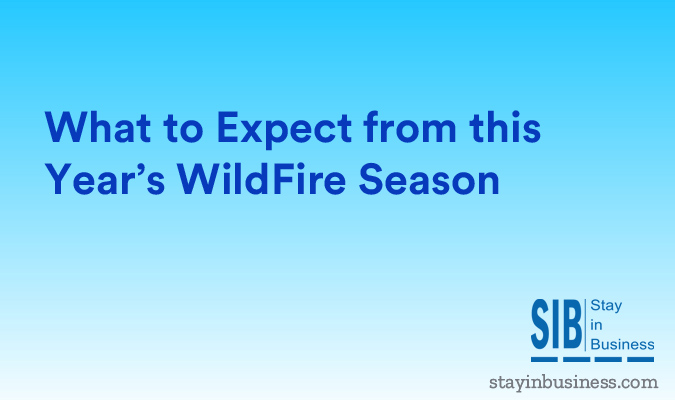What to Expect From This Year’s Wildfire Season

The wildfire season keeps growing in intensity and scale with every year. Their erratic nature causes widespread destruction. But carefully assessing the risks involved can help mitigate their impact.
North America’s western regions are highly prone to wildfires. Inhabited by millions of people, these areas are known for dry, hot summers and an excess of organic fuel in the nearby wilderness and uncultivated land. Experts unanimously agree that these are ideal conditions for a fire outbreak.
The National Inter agency Fire Center expects this year’s wildfire season to be particularly severe in regions along the west coast between California and Canada mainly due to an excessive growth of vegetation after the previous winter’s heavy rains.
Many large corporations, for instance, Pacific Gas & Electric in California, are already implementing power cut offs to avert fire related hazards which would impact thousands of customers in the coming months. The fires from November 2018 have already caused damage worth $12 billion in insurance claims – the most devastating financial impact in the state’s history.
Wildfire Trends in Recent Years
California fires are getting increasingly destructive. In the last two years alone, the state witnessed some of the biggest and most destructive wildfires.
Driving Factors
- Climate change
- Rapidly developing wild land-urban interface
- Accumulated fuels due to years of suppressing fires
The warmer than normal temperatures forecast for August are expected to reduce snow-packs at the higher altitudes and consequently reduce runoff which would alter the dryness of fuels that rely on runoff.
The situation could be worsened by drier conditions which would make regions all the more vulnerable to wildfire outbreaks, although other factors such as ignition and offshore wind currents also play a part.
Fires in California are typically caused by a combination of hot, dry summers and falls, delayed rainy seasons and offshore wind currents when vegetation have negligible amounts of moisture content.
California is especially vulnerable to the hot and dry Santa Ana and Diablo winds that drastically reduce the moisture content in vegetation such that even a tiny spark could ignite an explosive wildfire.
Wildfires in California tend to erupt due to varied causes such as lightning, thrown away burning cigarettes, neglected campfires and electrical discharge from equipment or power infrastructure.
Impact of the Previous Winter’s Rains on the Upcoming Wildfire Season
Regions that received an excess of rainfall are more vulnerable to fire outbreaks owing to the growth of extra vegetation and other organic fuels. However, snow pack melting is also delayed and the amount of time forests are dry enough to be fire prone is drastically reduced.
The biggest concern is the buildup over the years of ladder fuels that can quickly rise, spread and cause widespread destruction.
Wildfire Risk Mitigation Strategies
- Reach out to neighbors in your locality and collectively develop response efforts
- Connect with official agencies, communities and other groups working on fire mitigation
- Subscribe to programs such as Fire wise USA that give guidance on
- Creating defensible spaces – clearing your premises of debris and other combustible material
- Insulating your property with wildfire resistant material
- Designing emergency plans that include evacuation procedures
Conclusion
The importance of mitigating wildfire risks is gaining momentum, especially with the onslaught of global warming and climate change. Individuals living in communities can collectively reduce the ladder fuel content in their localities that can easily ignite and spread. This can be achieved through forest management techniques such as hazard reduction burning if there is only sparse vegetation. In the case of vegetation with dense overgrowth, forest thinning can be employed. Often, the material obtained from forest thinning can be used for power generation or other uses. Forested regions where the practice of timber harvesting has been declining over the years can even benefit financially by investing in fuel reduction.
Categories: Disaster Recovery Planning, DR Plans, Fire, Health, Natural Disasters, Safety
